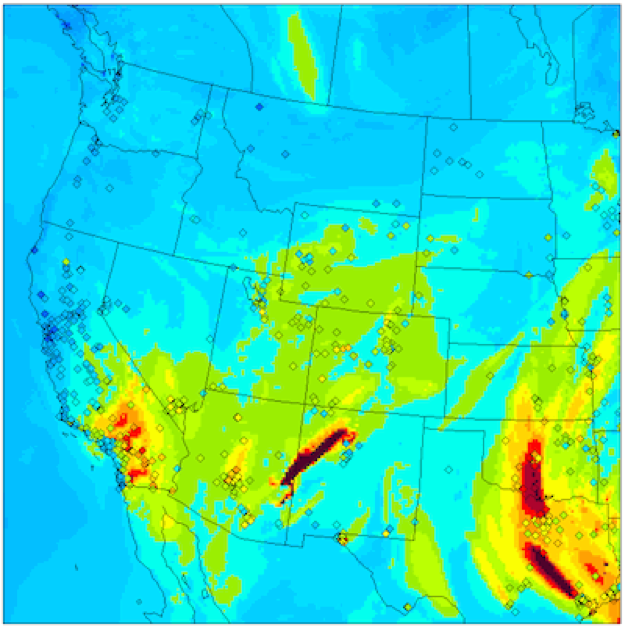Post by Zac Adelman
Zac Adelman is a Research Associate at UNC’s Center for Environmental Modeling and Policy Development.
The Clean Air Act is the cornerstone of U.S. policy to protect the public from the harmful effects of air pollution. The Act mandates that the U.S. Environmental Protection Agency review every five years the allowable limits of how much of a pollutant can be in the air anywhere in the U.S. The Act sets criteria for six different pollutants (nitrogen oxides, sulfur dioxide, ozone, lead, carbon monoxide and particulate matter) and grants authority to states and tribes to carry out the requirements of the Act.
Since the establishment of the National Ambient Air Quality Standards in 1971, the five-year review cycles for the different criteria pollutants have become out of sync for various reasons. What this amounts to is a dynamic regulatory environment that produces a revised standard for at least one of the criteria pollutants every two to three years.
For states and tribes to carry out the Clean Air Act they must have staff that are current on the regulatory requirements, technical approaches, and schedules mandated by the Act. With the most recent reviews of the standards for particulate matter and ozone completed in 2012 and 2015, respectively, the states and tribes sought help in the development of a training program to bring their staff up to speed on the new standards.
I have been managing an air pollution modeling training program at the Institute for the Environment (IE) for over a decade. Our program has trained hundreds of professional scientists and regulators on how to use computer models of air pollution formation and transport to support research and evidence-based decisions pursuant to improving the air quality in the U.S. and abroad.
Figure 1. Daily maximum ozone concentrations simulated by an air quality model overlaid with observations (diamonds).
In response to the need from the states and tribes for updated training on the Clean Air Act, I teamed with IE researchers and regional air quality planning organizations to leverage our training experience to develop a new course in the summer of 2015 called State Implementation Plans 101: Introduction to Air Quality Planning.
IE research associates developed a 2-day training program on air quality planning for state and tribal air pollution management professionals. The course includes three modules:
- Understanding Regulatory Requirements and Processes
- Data Sources and Resources Used in State Implementation Plan Development
- State Implementation Plan Products and Schedules
I first taught the course in July 2015 in Michigan to over 60 air agency staff members from states and tribes in the Great Lakes and Midwest. In April 2016 I taught the course in Pennsylvania to staff from air agencies in the Mid-Atlantic region. The course materials are also posted to the U.S. EPA Air Pollution Training Institute public educational materials archive, where they have been used by states and tribes in other regions of the country to train their staff on the latest clean air act requirements.
Originally envisioned as a course for early-career state and tribal regulatory agency staff, the SIP 101 course has become a valuable resource for both new and experienced regulators alike to review the Clean Air Act requirements and to become familiar with recent developments and schedule changes.
The Clean Air Act is a foundational piece of our nation’s environmental laws. In working with state and tribal agencies across the country and our federal partner, the U.S. Environmental Protection Agency, the Center for Environmental Modeling for Policy Development provides decision support software and the latest information on air pollution policy necessary to implement and enforce the Act. Training scientists and planners to use science and policy to ensure that our air is clean is one of the many examples of how Carolina is putting its research and expertise into action.


